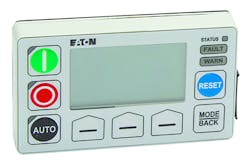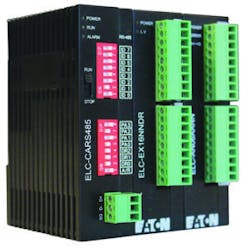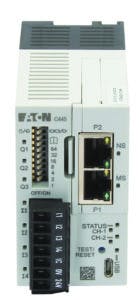Motors are the single largest energy consumer — making power management increasingly apparent as energy continues to increase and becomes costlier. Industrial facilities look to automation as an innovative method to better protect personnel and equipment while minimizing downtime due to the complexity of startup and shutdown procedures.
To address these challenges, new technologies are improving operator safety during commissioning and operation and achieving better motor performance and system reliability to help companies power their facilities efficiently and safely.
Modern motor protection solutions can provide added value compared to traditional motor-starting using conventional overload relays. Today’s motor management relays and drives offer advanced protection and monitoring options, alongside customized starter control that can reduce wiring time, complexity, space and material costs.
The bottom line is that products are getting smarter, allowing facilities to get the diagnostics and intelligence needed to improve performance without the need for a complete overhaul.
The future is here
Imagine combining the motors and drives technologies into one product. The intelligence of the drives would be combined with the intelligence of the motor or complement each other. They would no longer be stand-alone components.
This is already happening with motor management relays. Most industry players have the intelligence built in, so they can monitor things like temperature and torque, among others.
Courtesy of Eaton
For example, Eaton is introducing logic into its PowerXpert C445 intelligent motor management relay, which provides a high level of monitoring accuracy and protection for the entire power system — from the incoming power source feeding the motor all the way to the individual pump or load. It protects the motor, maximizes uptime, reduces integration costs, enhances personnel safety and offers a communications feature that allows for remote monitoring and troubleshooting.
Motor management relays: Controlling and protecting the motor
A motor management relay can both control and protect the motor. This eliminates the need to wire complex circuits to achieve desired control functionality. These relays can be configured for multiple control sources and starter profiles. All control signals are sent directly to the relay — with the contactor output changing state based on both control and protection.
Courtesy of Eaton
A traditional overload relay has a fault contact that only changes state and opens in the case of a fault. Many overload relays still offer comprehensive protection features, opening this contact not just due to a thermal overload, but also due to other current, voltage and power-based protections.
However, no matter the level of protection offered, the wiring method relies on all control functionality taking place outside the relay. The overload relay is simply a normally closed fault contact wired correctly in series with the control circuit so that a protection event will stop the motor. Also, drives allow for motor protection against short circuits, lightning strikes and other factors, and they reduce energy costs by running the motor at the appropriate speed.
A motor management relay removes the need for extra wiring yet achieves the same control requirements. A simple user interface provides control and status indication. Control signals can also be sent directly to the device over the network. This is all achieved with a single cable connection to the user interface and the network. Motor management relays and variable speed drives continue to save on wiring time, cost and complexity, even when traditional pilot devices are preferred for control.
Even in basic starter applications, this simple technology can save facilities time, money and space. Benefits increase as starter logic becomes more complex, such as two-speed or reverse applications with multiple contactors or applications involving other devices.
Conclusion
Motors are the single largest energy-consuming device, and controlling them to be more efficient can create untapped, relatively easily obtained energy savings. In fact, the two biggest savings are installation costs and energy conservation.
The development of connected machines is empowering users with real-time monitoring along the production line to improve productivity and reduce downtime. In new technology such as motor management relays, real-time intelligence is being paired with online monitoring. This provides a platform for data analytics and the opportunity to proactively identify potential problems to perform diagnostic and prognostic calculations, having an impact on uptime and performance — and ultimately, the bottom line.
Stephen Zbytowski is the product manager for the soft starters and motor protection relays at Eaton. He has worked with industrial customers to implement automation, motor management and safety products for more than 20 years. Zbytowski has experience implementing products for several major manufacturers of automation and motor control products. His knowledge of overall equipment efficiency/effectiveness, IoT and uptime assists customers in selecting motor starters, communications, pilot devices, enclosed control, PLCs and relays.





